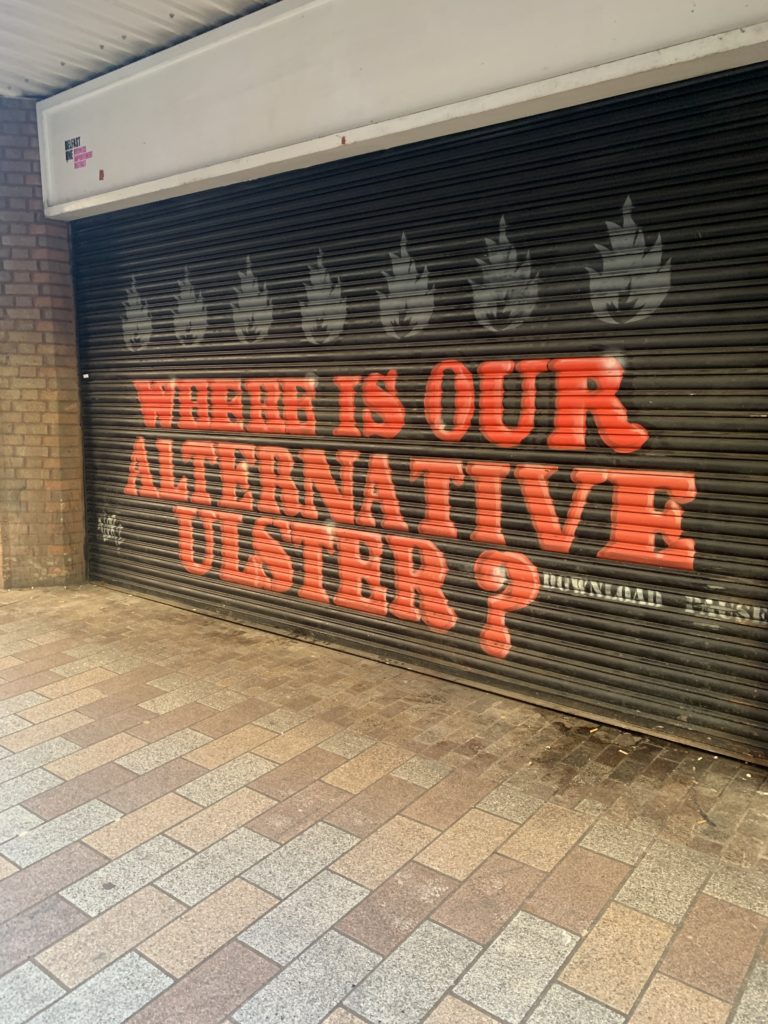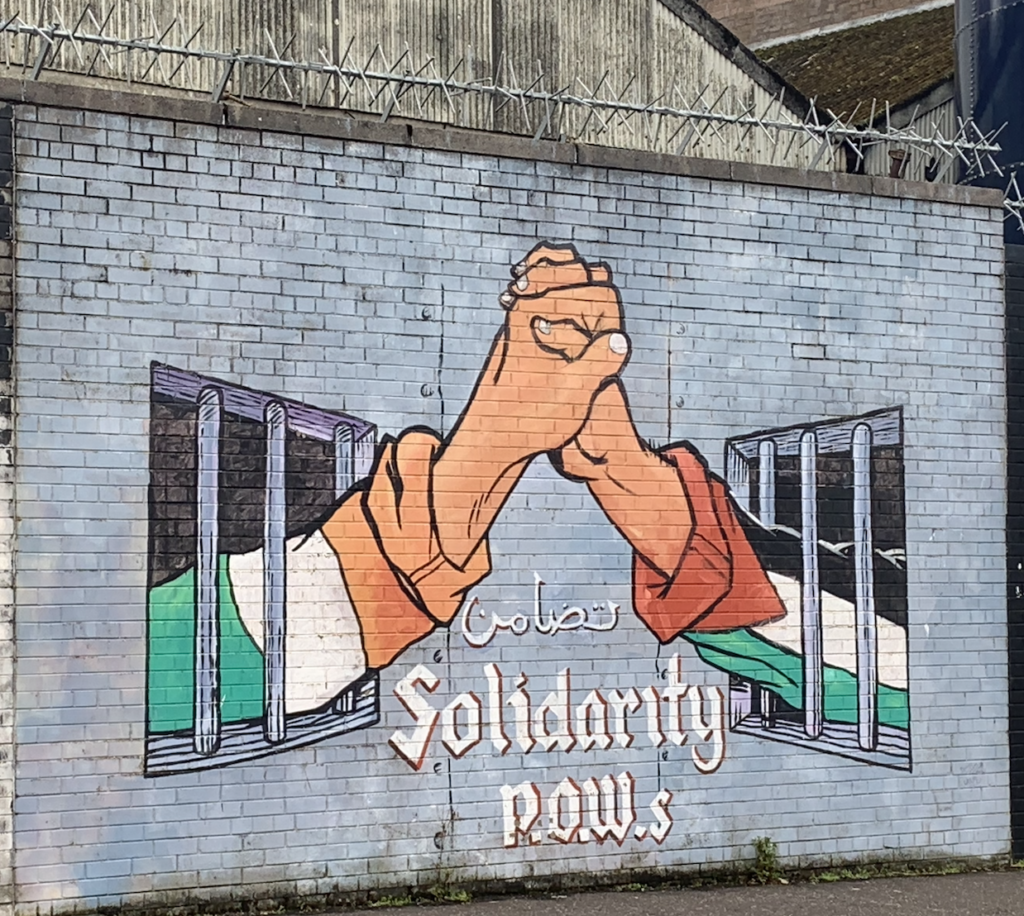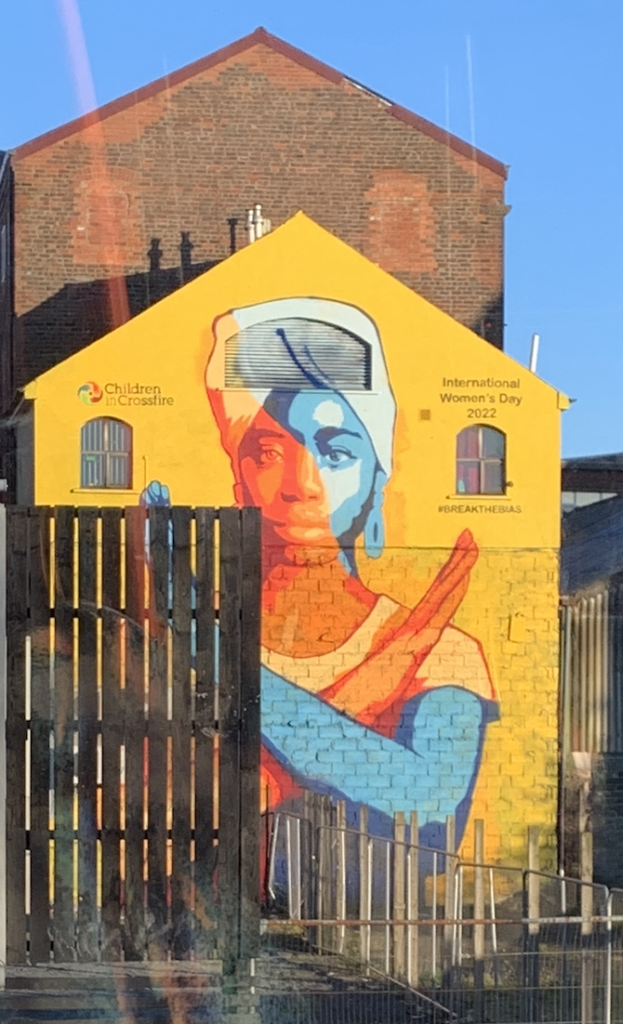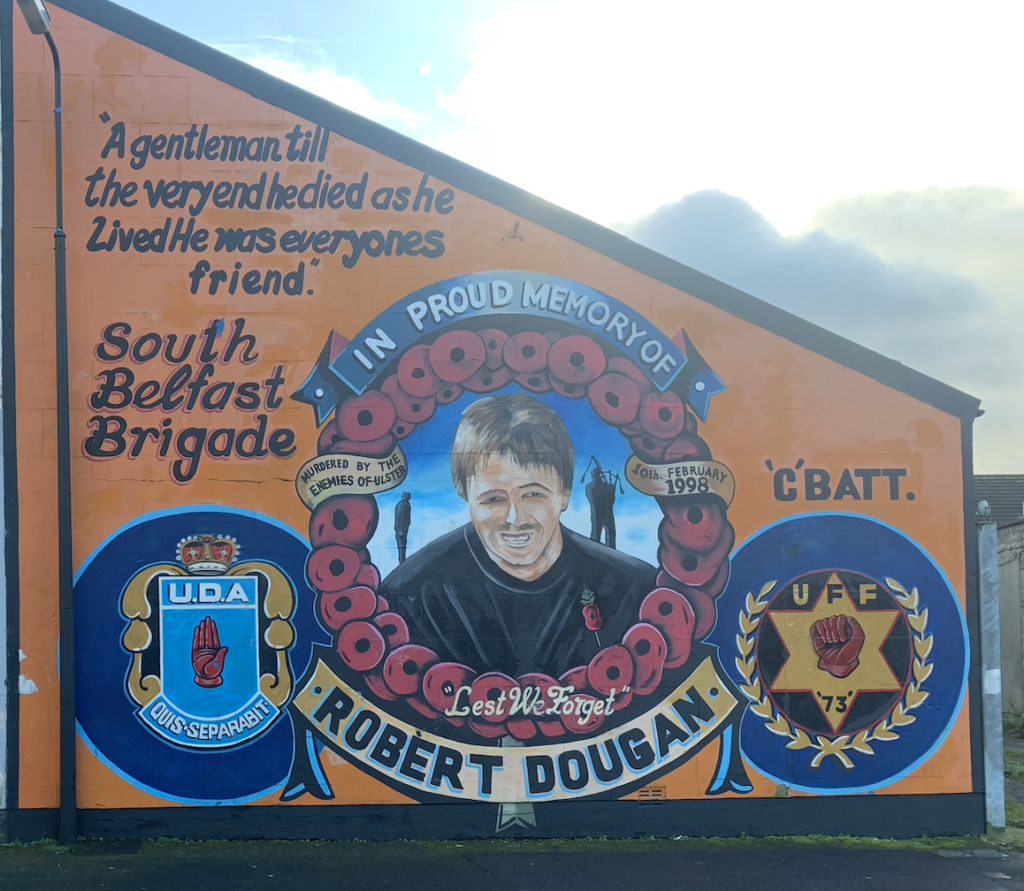Belfast graffiti is famous for a reason. Depending on where you go in the sprawling red-brick-house city, you’ll get a different set of opinions. In city center, you’re likely to see colorful, de-politicized murals painted by artists hired by the city. A woman with a hawk, inspiring quotes in cursive, funky abstracts, and the occasional wacky portrait adorn the sides of shops. However, if you wander a few miles south, north, east, or west, you’ll get an entirely different depiction of the city.
I have taken to walking the city on weekends, picking a direction and heading that way until it gets dark or the city drifts away into highway. This has taken me to the neighborhoods up the slopes of Divis mountain, into suburban southern streets, into classic red brick northern boroughs, and deep into the industrial east of the Titanic district. The great thing about these walks is that they never get old—the graffiti changes with the political atmosphere and seasons. Where once a painting on climate change stood, now a Palestinian flag replaces it. Along Shankhill road to the north a more permanent assortment of murals (along the peace wall) stands, and shifts occasionally. However, I’ve found that it’s just as exciting to find a painting hiding around the corner in residential neighborhoods and business districts alike.
On days when I have less time, I’ll wander the streets of Sandy Row, just a few blocks away from me and a staunchly Loyalist neighborhood. Here you’ll come across two-story portraits of William the Orange, Union Jacks tattered from flying, and images of the Queen. Whether here or in a Nationalist part of the city one thing is consistent—murals depicting those who died in the Troubles. Often there will be lists of people living in the neighborhood who were killed, alongside photos of football clubs or brigade units. Some appear to have been recently touched up or are made permanent with adjacent plaques.
I love that the people of this city use the walls to tell their stories. By sharing their visions, artwork, political views, and messages with passersby, they are also sharing their city and what makes it such a unique place to study and live in.
A few photos of murals below.




